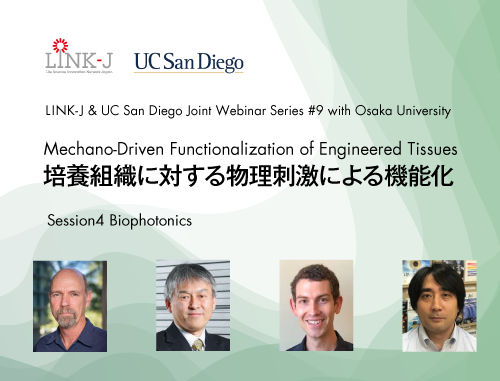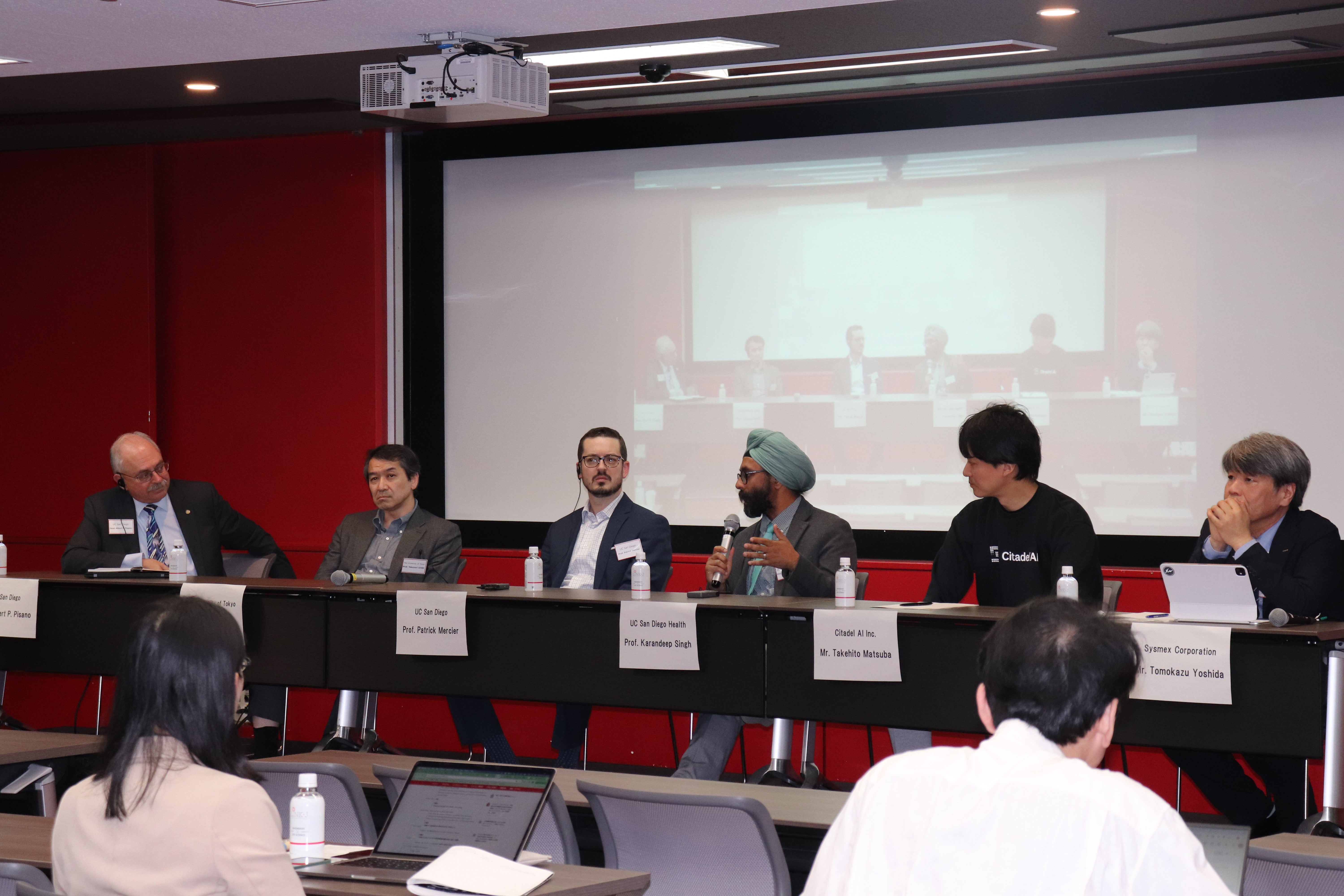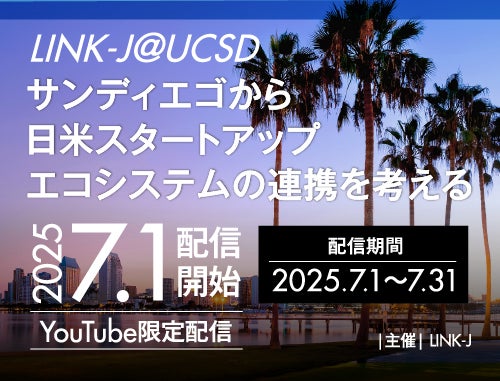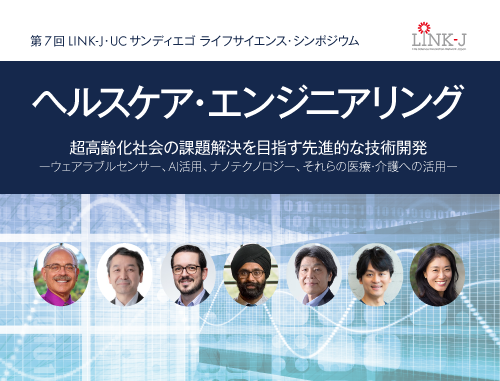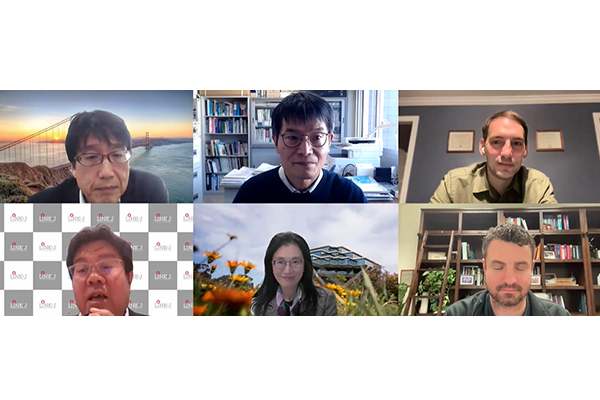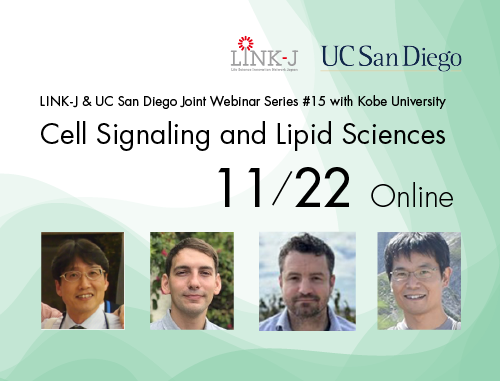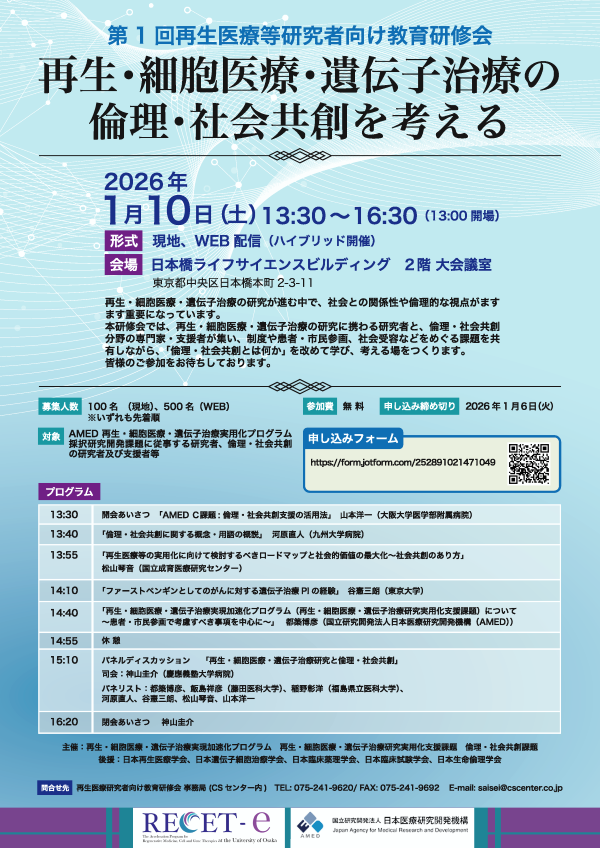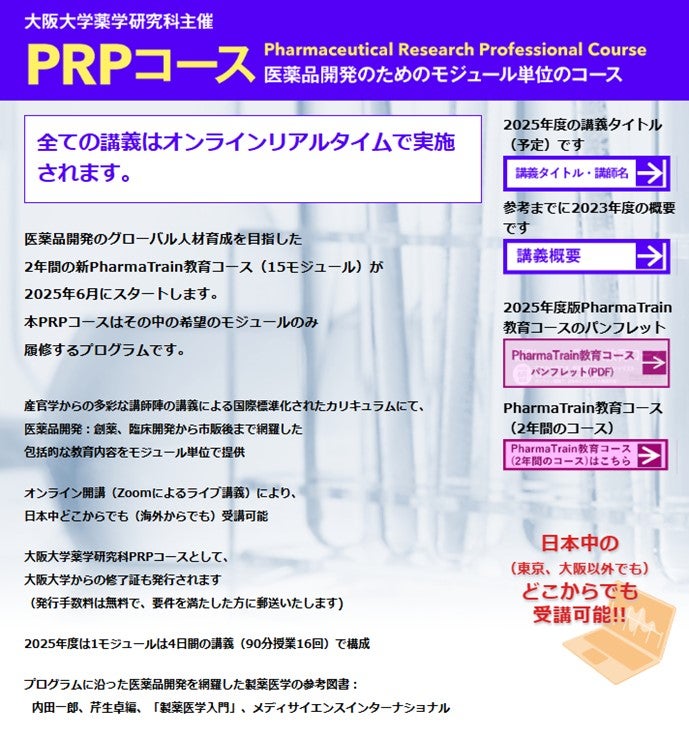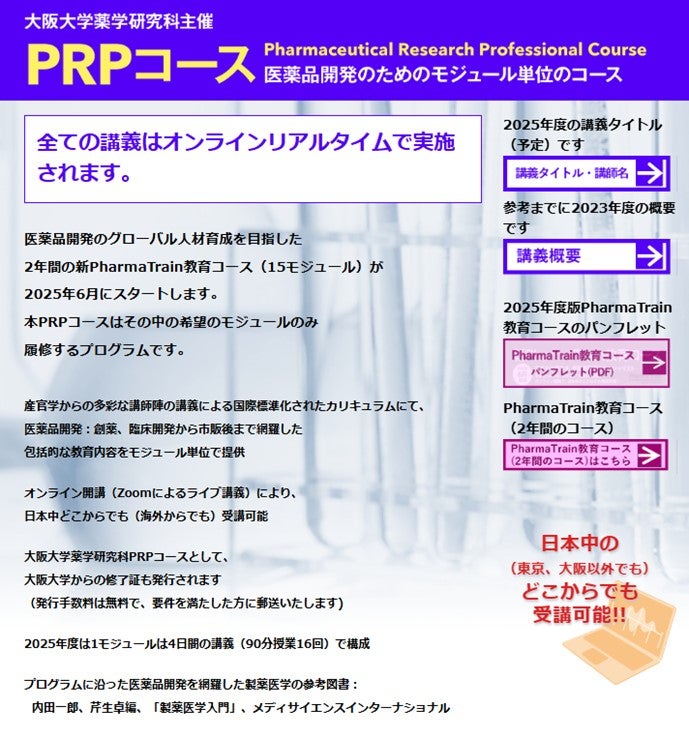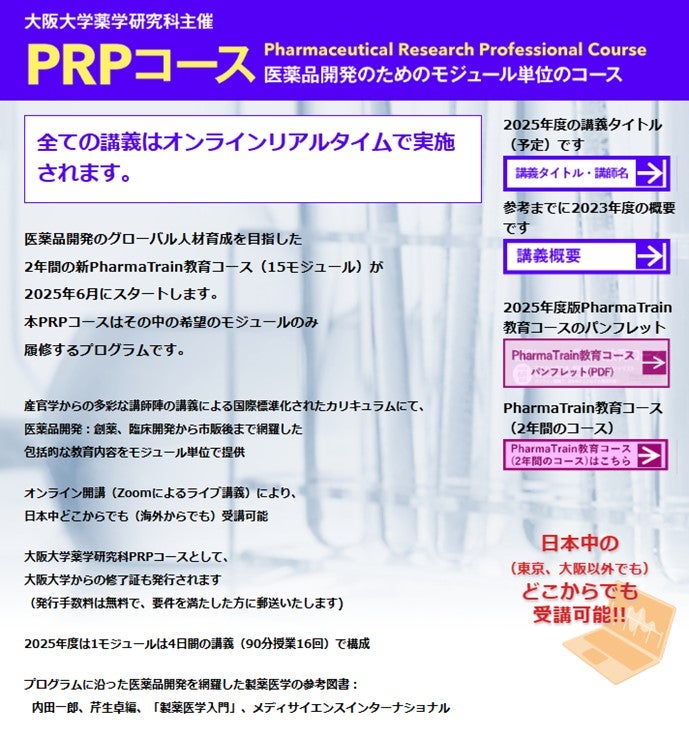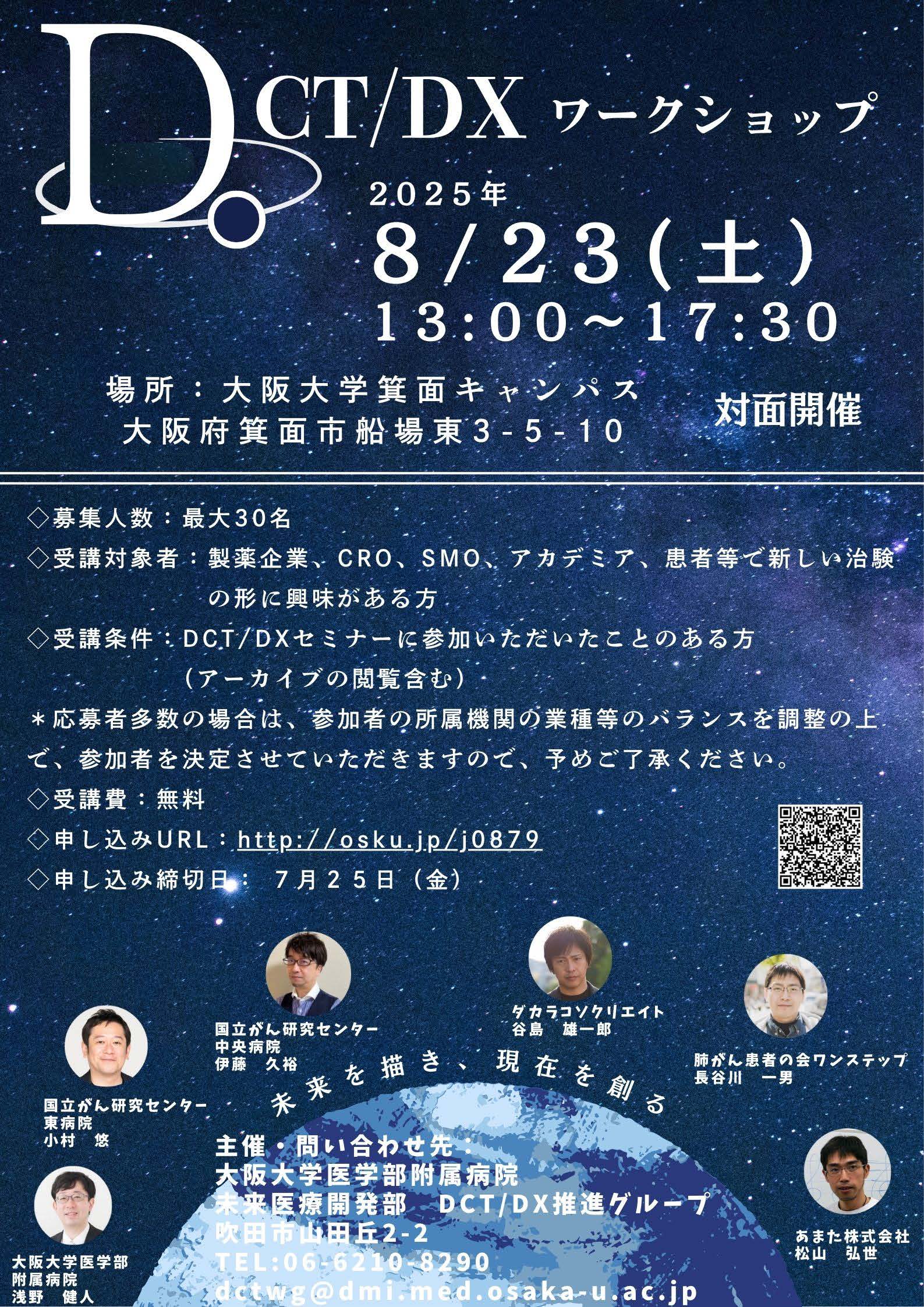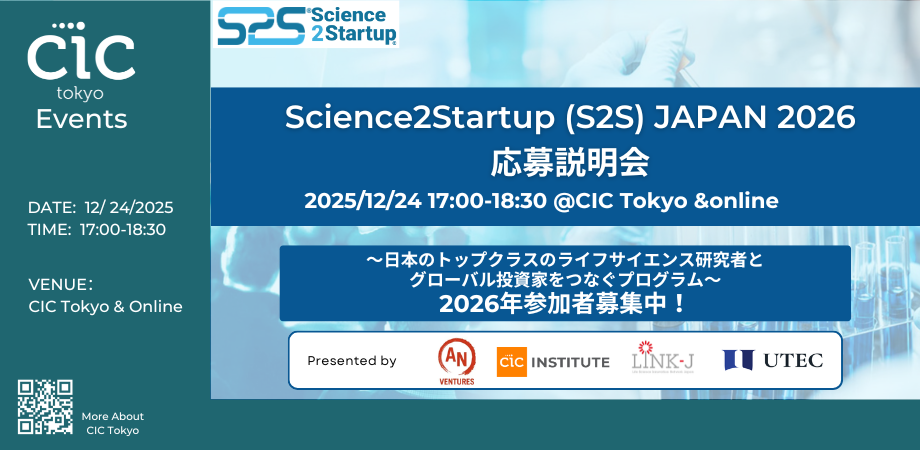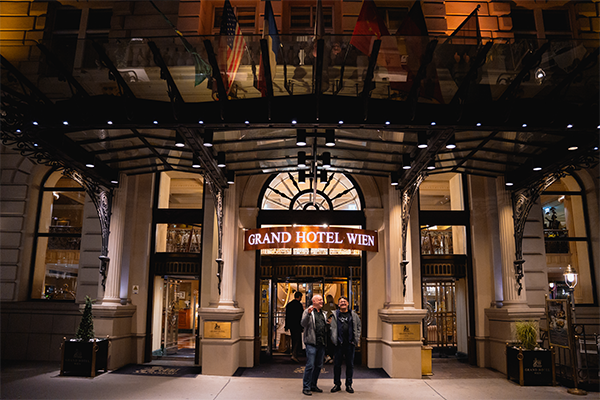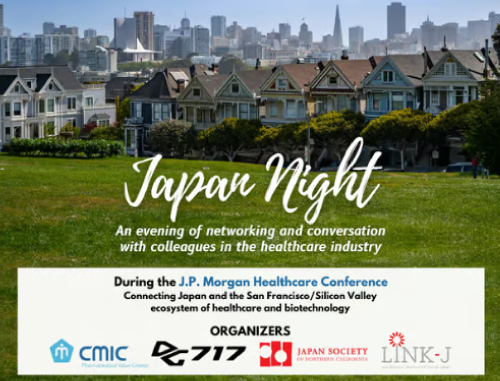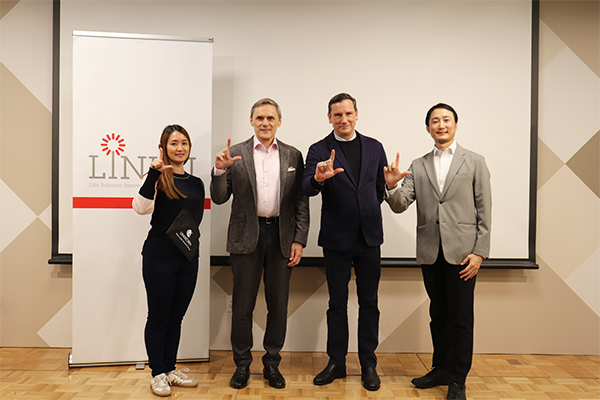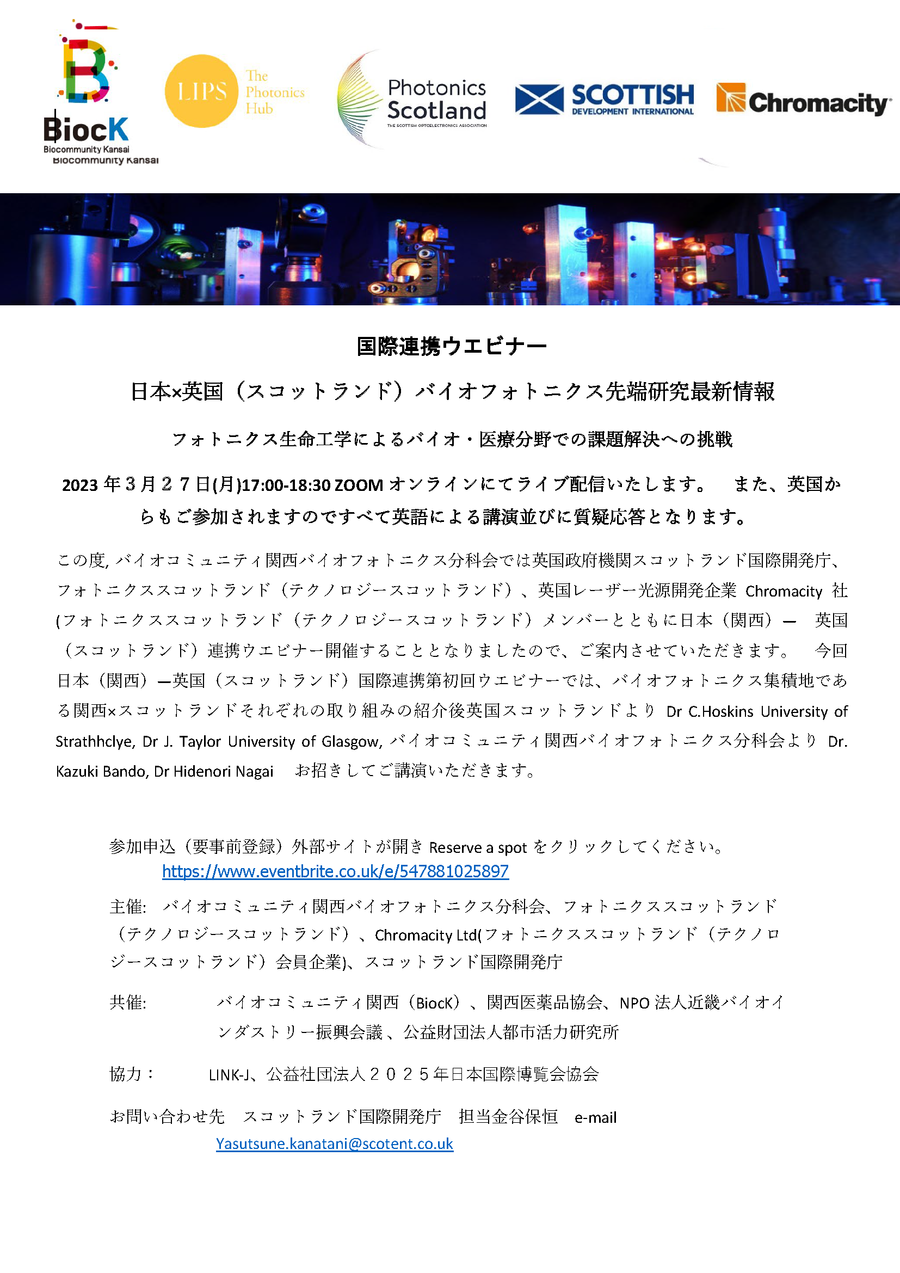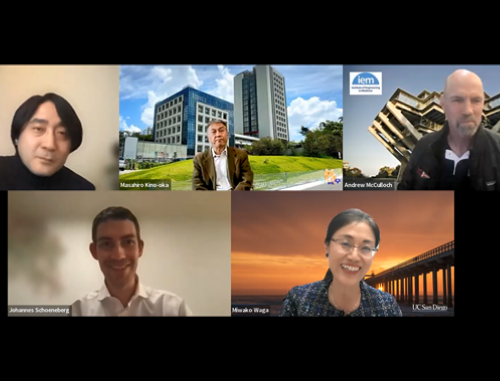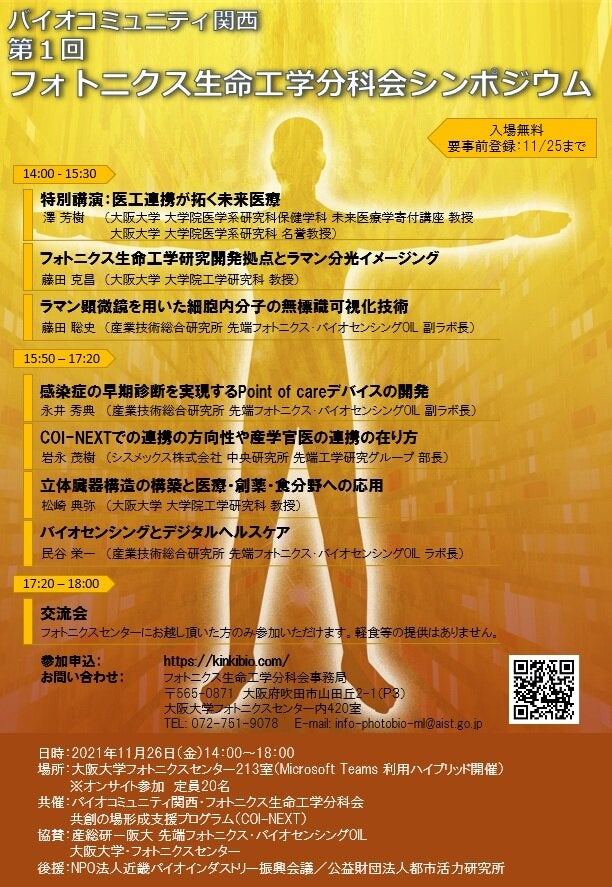LINK-J & UCサンディエゴ ジョイントウェビナーシリーズ 第9回 with 大阪大学国際医工情報センター
UCサンディエゴと大阪大学は、教育と研究の分野で長きにわたり協力関係を築いてきました。
近年では、バイオエンジニアリング、バイオインフォマティクス、組織工学、再生医療など、連携分野の拡大に努めてきました。
この度LINK-JとUCサンディエゴが共催し、大阪大学国際医工情報センター(MEIセンター)と協力し、両校の研究者が「バイオフォトニクス」に関する最新の研究成果を発表するウェビナーを開催します。
※同時通訳あり
※英語字幕利用可能(オン/オフは自由に選択できます)
※字幕は市販されているアプリを使用しており、LINK-JおよびUC San Diegoは誤訳、訳文の欠落など、字幕に関する一切の責任は負えませんので、ご了解願います
字幕利用方法:クローズドキャプションの管理と表示
◆前回までのUCサンディエゴに関するイベントやレポートはこちらをご覧ください
参加方法
●peatixから申し込む
本イベントにはZoomウェビナーを使用します。事前にpeatixにて参加登録をお済ませください。
・参加申込後の視聴ページに参加URL・パスワードを掲載しておりますので、ご確認いただき、視聴時間になりましたら「チケット表示」→「イベントに参加」ボタンよりお入りください。(専用URLとなりますので、他者との共有はお控えください)
・ウェビナーの操作方法等はご自身で事前にご確認をお願いいたします。
プログラム
| 日本時間 | 内容 |
| 10:00-10:05 | Welcome - Akihiko Soyama, LINK-J and Miwako Waga, UC San Diego Remarks - Dr. Masahiro Kino-oka, MEI Center, Osaka University & Dr. Andrew McCulloch, UC San Diego |
| 10:05-10:35 | Presentation - "4D Cell Biology: Adaptive optics lattice light-sheet imaging and AI powered big data processing of live stem cell-derived organoids." Dr. Johannes Schoeneberg, UC San Diego School of Medicine |
| 10:35-11:00 | Presentation - "Raman microscopy as a complementary tool for biological imaging" Dr. Katsumasa Fujita, Department of Applied Physics, Osaka University |
| 11:00-11:14 | Q&A and Discussion - moderated by Drs. Kino-oka and McCulloch |
| 11:14-11:15 | Closing Remarks - A. Soyama |
アブストラクト
Schoeneberg先生ご講演
New advanced microscopy methods such as adaptive optics lattice light-sheet microscopy allow fundamentally new insights into cell biology. At the same time, they require high performance computing and machine learning for data processing. The combination allows for four dimensional (4D) cell biology.
藤田先生ご講演
Raman spectroscopy has been an important tool for scientists because of its ability to analyze materials in a label-free manner. Raman spectra reflect the vibrations of molecules in a sample and provide rich information about the composition and environment of the sample.
However, due to the low efficiency of Raman scattering, it has been difficult to use Raman scattering for imaging biological samples under physiological conditions. We have developed a Raman imaging technique that achieves fast Raman imaging by detecting Raman spectra of the sample in parallel. By detecting hundreds of Raman spectra from the illumination line in parallel, we were able to drastically reduce the image acquisition time. We applied this line-illumination Raman imaging technique to label-free observation of molecular dynamics in cellular phenomena such as apoptosis, drug response, cell division, and cell differentiation. 532nm laser excitation is used to monitor mitochondrial dysfunction at the cellular level using the resonance Raman effect of heme proteins. We have also proposed and demonstrated the use of alkynes as tiny tags for imaging small molecules. This enabled us to observe molecules that are too small to be labeled by fluorescent probes.
登壇者略歴
 Dr. Andrew McCulloch, Distinguished Professor of Bioengineering and Medicine; Director, Institute of Engineering in Medicine, UC San Diego
Dr. Andrew McCulloch, Distinguished Professor of Bioengineering and Medicine; Director, Institute of Engineering in Medicine, UC San Diego
Dr. Andrew McCulloch is Distinguished Professor of Bioengineering and Medicine at the University of California San Diego and Director of the Institute for Engineering in Medicine. He earned his bachelor (1981) and Ph.D. (1986) degrees in Engineering Science at the University of Auckland and joined the UC San Diego faculty in 1987. He directs the UCSD Interfaces Graduate Training Program and the Interdisciplinary Ph.D. Specialization in Multi-Scale Biology. Dr. McCulloch served as Vice Chair of the Bioengineering Department from 2002 to 2005 and Chair from 2005 to 2008. He is also a member of Qualcomm Institute, the Center for Research on Biological Systems, and a Senior Fellow of the San Diego Supercomputer Center.
 紀ノ岡 正博 先生 大阪大学大学院工学研究科 生物工学専攻 生物プロセスシステム工学領域 教授
紀ノ岡 正博 先生 大阪大学大学院工学研究科 生物工学専攻 生物プロセスシステム工学領域 教授
【略歴(抜粋)】
1989年03月大阪大学 基礎工学部 化学工学科 卒業 学士
1991年03月大阪大学 基礎工学研究科 化学系専攻 修了 修士
1991年06月 ~ 2000年01月大阪大学助手
1996年01月大阪大学 基礎工学研究科 工学博士
2000年02月01日 ~ 2003年03月31日,基礎工学研究科 物質創成専攻,講師,専任
2003年04月01日 ~ 2007年03月31日,基礎工学研究科 物質創成専攻,助教授,専任
2007年04月01日 ~ 2009年03月31日,基礎工学研究科 物質創成専攻,准教授,専任
2009年04月01日 ~ 2020年03月31日,工学研究科 生命先端工学専攻,教授,専任
2020年04月01日 ~ 継続中,工学研究科 生物工学専攻,教授,専任
【研究内容・専門分野】
ヒト組織培養リアクターの開発,組織工学製品の品質評価手法の確立,セルプロセッシングシステムの構築,画像処理技術を伴う培養制御法の開発,再生医療,創薬探索,バイオ機能応用およびバイオプロセス工学関連,生体医工学関連
 Dr. Johannes Schoeneberg, Assistant Professor, UC San Diego School of Medicine
Dr. Johannes Schoeneberg, Assistant Professor, UC San Diego School of Medicine
[Professional Experience]
2017-present: Postdoc, University of California, Berkeley
2018-2019: Scientific Consultant, Allen Institute for Cell Science
2015-2017: Postdoc, University of California, Berkeley; Max Planck Institute of Biophysics
2013-2014: Subgroup Lead Scientist, Free University Berlin
2009-2014: Subgroup Lead Scientist,Max Planck Institute for Molecular Genetics
2006-2014: Entrepreneur, Schoeneberg Web Services
[Education]
2009-2014: Ph.D., Free University Berlin; Max Planck Institute for Molecular Genetics
2008-2009: M.Sc., Free University Berlin; Max Planck Institute for Molecular Genetics
2005-2008: B.Sc., Saarland University
 藤田 克昌 先生 大阪大学大学院工学研究科 教授
藤田 克昌 先生 大阪大学大学院工学研究科 教授
【略歴】
1991年 3月 岡山県立岡山操山高等学校 卒業
1995年 3月 大阪大学 工学部 応用物理学科 卒業
1997年 3月 大阪大学 大学院工学研究科 博士前期課程 修了
1998年 4月 日本学術振興会 特別研究員(DC2)
2000年 3月 大阪大学 大学院工学研究科 博士後期課程修了、博士(工学)
2000年 4月 日本学術振興会 特別研究員(PD 於 京都府立医科大学)
2002年 4月~10月 阪大フロンティア研究機構 科学技術振興特任教員
2002年10月~2007年 3月 大阪大学 大学院工学研究科 助手
2007年 4月~8月 大阪大学 大学院工学研究科 助教
2007年 8月~2018年10月 大阪大学 大学院工学研究科 准教授
2008年10月~2014年 3月 JST ERATO袖岡プロジェクト グループリーダー(兼任)
2018年10月~ 大阪大学 大学院工学研究科 教授
2019年11月~ 産業技術総合研究所 特定フェロー(クロスアポイントメント)
【研究内容】
非線形光学と分光学とを利用した新しい光学顕微鏡の開発。主に、細胞や生体組織の観察に利用できる顕微鏡の開発を行っている。これまで、リアルタイム多光子顕微鏡、第2高調波顕微鏡、ラマン散乱顕微鏡、超解像蛍光顕微鏡について研究を行ってきた。
参加費
無料(要事前登録)
